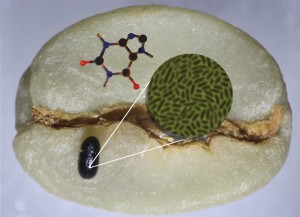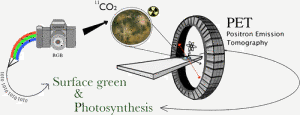THE coffee-berry borer is a pesky beetle. It is thought to destroy $500m-worth of unpicked coffee beans a year, thus diminishing the incomes of some 20m farmers. The borer spends most of its life as a larva, buried inside a coffee berry, feeding on the beans within. To do so, it has to defy the […]
Gut microbiota mediate caffeine detoxification in the primary insect pest of coffee
The coffee berry borer (Hypothenemus hampei) is the most devastating insect pest of coffee worldwide with its infestations decreasing crop yield by up to 80%. Caffeine is an alkaloid that can be toxic to insects and is hypothesized to act as a defence mechanism to inhibit herbivory. Here we show that caffeine is degraded in […]
What’s Next for the Microbiome? White House requests information on future research of Earth’s microbiomes
The White House Office of Science and Technology Policy (OSTP) has issued a Request for Information to provide a broad community of stakeholders, including experts and members of the public an opportunity to comment on the current status and needs of microbiome research. Find out more here: Whitehouse Microbiome RFI
Noninvasive Mapping of Photosynthetic Heterogeneity in Biological Soil Crusts by Positron Emission Tomography: Carbon Fixation
Biological soil crusts (BSCs) are critical contributors to the biogeochemistry of ecosystems in arid and semi-arid regions worldwide. Photosynthetic microorganisms such as cyanobacteria are often the predominant primary producers, fixing both carbon and nitrogen and producing polysaccharides that aid in soil stabilization. Here, we exposed BSCs to 11CO2 and quantified the spatial distribution of carbon […]
M2B launches with FY15 LDRD funding
The labwide initiative, Microbes-to-Biomes, has kicked off with five projects funded through the Laboratory Directed Research and Development (LDRD) program. New FY2015 LDRD projects: Harnessing the soil microbiome for food and fuel security (Eoin Brodie (ESD)/Peter Nico (ESD) – PIs) Increasing the availability of phosphorus to plants by engineering phosphate solubilizing plant-associated bacteria (Matthew Blow […]
Strong microbe-mineral interactions and their feedbacks to climate
ESD climate scientists Jinyun Tang and Bill Riley have developed a climate model that quantifies interactions between soil microbes and their surroundings. It’s the first such model to include several physiologically realistic representations of how soil microbes break down organic matter, a process that annually unleashes about ten times as much carbon into the atmosphere […]
PBS video highlights LBNL contributions to understanding the perils of Permafrost thaw
The Next Generation Ecosystem Experiment–Arctic project is a collaborative project, led by Oak Ridge National Laboratory, that seeks to integrate process investigations, experiments, and modeling to predict ecosystem behavior and trajectory under warming conditions. Berkeley Lab contributes to the site characterization, modeling, microbial ecology, and energy aspects of the project. The video, by KQED Science […]
Complex Soil Systems conference hosted by Berkeley Lab
On September 3-5, 2014, ESD’s Eoin Brodie and Boris Faybishenko co-chaired the first Complex Soil Systems Conference at the David Brower Center in downtown Berkeley. This flagship conference, with the common theme of developing “A Path to Improved Understanding of Complex Soil Systems,” made a unique contribution to integrated soil sciences by addressing soil-science fundamentals […]
DOE BER Virtual Laboratory report recommends creating a BER Virtual Laboratory
DOE BER Virtual Laboratory report recommends creating a BER Virtual Laboratory that would be developed by integrating and strategically expanding BER resources. Read the report here
DOE report on Complex Systems Science for Subsurface Fate and Transport
DOE report on Complex Systems Science for Subsurface Fate and Transport Read the report here
DOE BER Virtual Laboratory report recommends creating a BER Virtual Laboratory
DOE BER Virtual Laboratory report recommends creating a BER Virtual Laboratory that would be developed by integrating and strategically expanding BER resources. Read the report here


